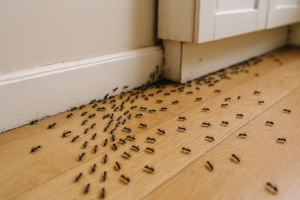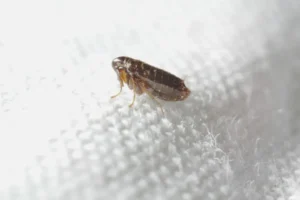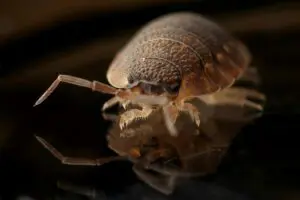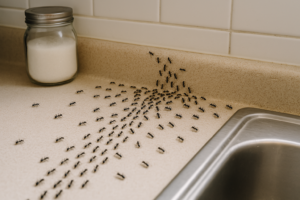
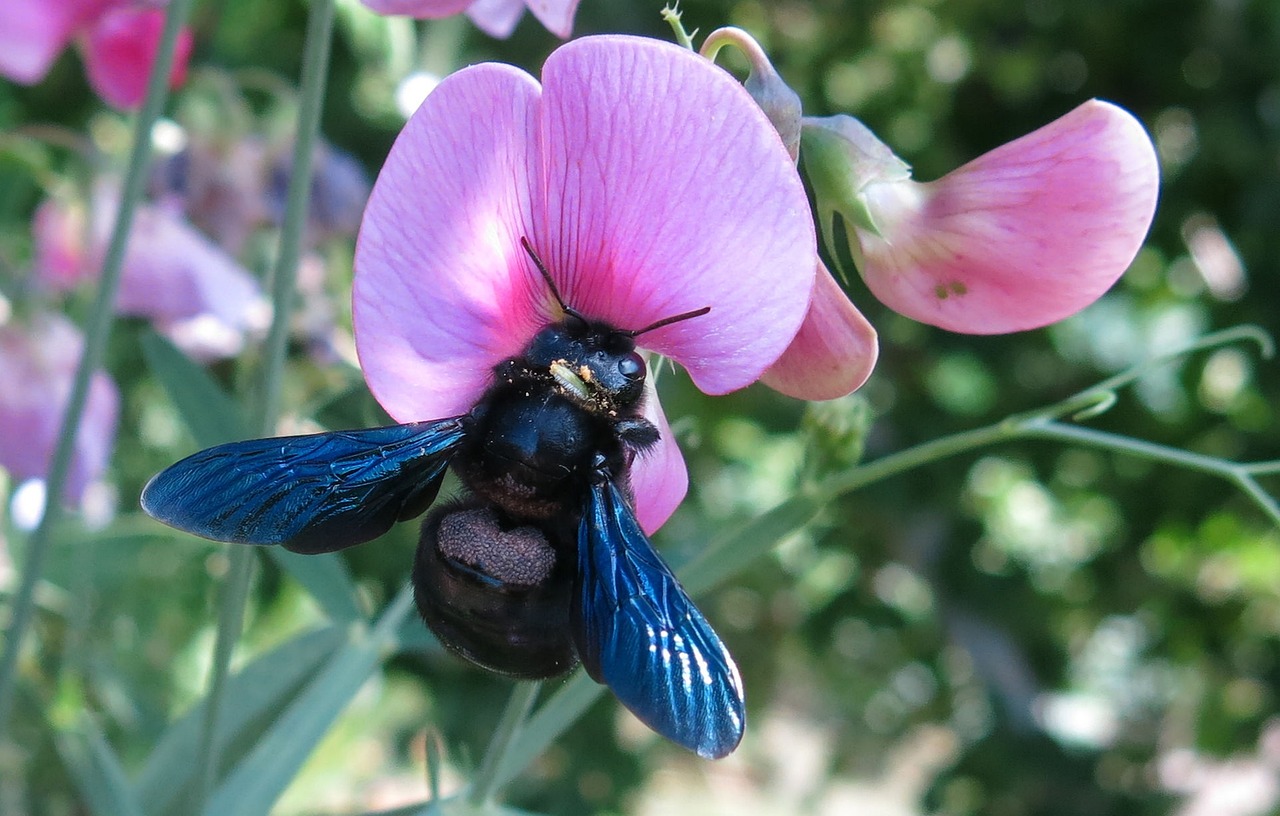
Carpenter Bee Damage: Defending Your Property
Carpenter bees, solitary insects known for their wood-boring habits, can wreak havoc on wooden structures. This article explores the behavior of carpenter bees and the damage they inflict, delving into preventive measures and eco-friendly control methods to safeguard property integrity while preserving the environment.
Identifying Carpenter Bee Damage
Signs of a carpenter bee infestation include round, half-inch diameter holes found in wooden structures, particularly in eaves, decks, fences, and other exposed wood surfaces. These holes are typically perfectly bored and may contain traces of sawdust or "frass" around the entrance. Additionally, you might observe carpenter bees hovering around the infested area, particularly during the warmer months when they are most active.
The damage caused by carpenter bees primarily stems from their tunneling activities within wooden structures. Unlike termites, carpenter bees do not eat wood but rather excavate galleries for nesting. Over time, these tunnels weaken the structural integrity of the wood, potentially causing significant damage if left unchecked. In severe cases, carpenter bee infestations can lead to cosmetic damage, structural instability, and even compromise the safety of buildings or wooden structures.
Understanding Carpenter Bee Behavior
Carpenter bees are solitary insects known for their wood-boring habits. They're most active during the day, particularly in warm weather. They typically begin their activity in the spring, with females searching for suitable nesting sites in untreated or unpainted softwoods such as cedar, pine, or redwood. Preferred nesting sites include eaves, fascia boards, decks, fence posts, and other exposed wooden structures. Once a suitable site is found, the female excavates a tunnel into the wood using her mandibles, creating galleries where she lays her eggs. These tunnels can extend several feet into the wood.
The female carpenter bee provides each egg chamber with a ball of pollen and nectar before laying an egg and sealing off the chamber with wood pulp. The larvae hatch from the eggs, feed on the provided pollen and nectar, and eventually pupate before emerging as adult bees. Repeated tunneling activity by multiple generations of carpenter bees can lead to significant structural deterioration in wooden structures.
Potential Risks of Carpenter Bee Damage
Male carpenter bees can be territorial and may act aggressively towards intruders, but they lack stingers and cannot sting. Female carpenter bees, while capable of stinging, are typically non-aggressive unless provoked or handled. The real hazard that carpenter bees pose is property damage; carpenter bees can cause significant property damage over time. While each bee's individual tunneling activity might seem minor, the cumulative effect of multiple generations of carpenter bees can lead to substantial structural deterioration in wooden structures. The tunnels they bore weaken the integrity of the wood, potentially compromising the stability of decks, eaves, fences, and other wooden elements of homes and businesses. This can result in costly repairs and pose safety risks.
Carpenter bee damage isn't limited to residential properties; it can also affect businesses. Structures like outdoor seating areas, signage, and decorative wooden elements are vulnerable to carpenter bee infestations. For businesses, this damage not only impacts aesthetics but can also affect the overall impression of the establishment and potentially deter customers. Furthermore, if left untreated, carpenter bee damage can attract other pests, exacerbating the problem. While not as immediately destructive as termites, carpenter bees still pose a threat to property integrity and require attention to prevent further deterioration.
Preventive Measures
Preventing carpenter bee infestations begins with selecting the right type of wood. Avoid using untreated or unpainted softwoods like cedar, pine, or redwood for outdoor structures. Instead, opt for hardwoods or pressure-treated lumber, as these are less attractive to carpenter bees. Additionally, regularly inspect wooden structures for signs of damage or existing bee activity. To further deter carpenter bees, consider treating exposed wood surfaces with a sealant or paint. Apply multiple coats, ensuring all surfaces are adequately covered, including cracks and crevices. Choose light-colored paints, as carpenter bees are attracted to darker shades. Be sure to reapply sealants or paint every few years to maintain effectiveness.
Implement physical barriers like screens or mesh over vulnerable areas to prevent access to potential nesting sites. Fill existing bee holes with wood putty or plugs and repaint the surface to discourage re-infestation. Installing decoy nests made of untreated wood may also divert bees away from valuable structures. Lastly, consider integrating natural repellents such as citrus-based oils or aromatic woods like cedar or eucalyptus around susceptible areas to discourage carpenter bee activity. Regular maintenance, vigilant inspection, and proactive measures are key to preventing carpenter bee infestations and preserving the integrity of wooden structures.
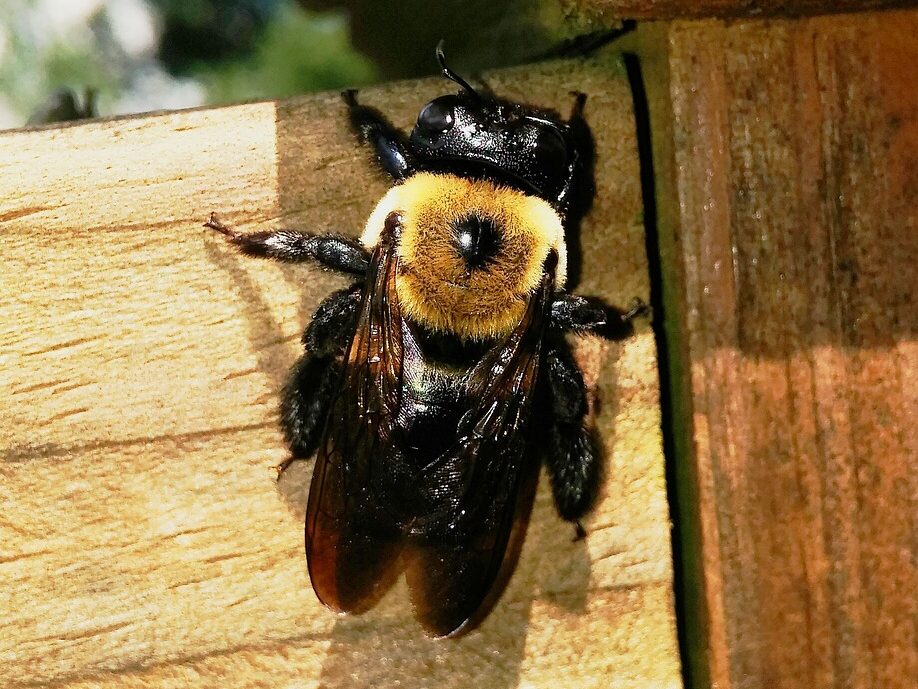
Professional Pest Control For Carpenter Bee Damage
Seek professional pest control for wildlife if the problem persists despite preventive measures or if the infestation is extensive. Signs include numerous exit holes, visible tunneling damage, or recurring bee activity despite attempts to deter them. Additionally, if structural integrity is compromised, or if infestations occur in hard-to-reach areas like within walls or roof eaves, professional intervention is necessary. Pest control experts have the knowledge, tools, and techniques to effectively eradicate carpenter bees while minimizing harm to the environment and property. Prompt action can prevent further damage and ensure the long-term health and safety of wooden structures.
Environmental Considerations
Eco-friendly approaches to carpenter bee control prioritize preservation of property integrity while minimizing harm to the environment. One method involves using natural repellents such as citrus-based oils or aromatic woods to deter carpenter bees from nesting in wooden structures. Implementing physical barriers like screens or mesh can prevent access to vulnerable areas without resorting to chemical treatments. Installing decoy nests is another chemical-free way to divert bees.
Balancing pest management with conservation involves adopting integrated pest management (IPM) strategies. This approach combines preventive measures, biological controls, and targeted interventions to minimize harm to beneficial insects and ecosystems while effectively managing pest populations. For example, encouraging natural predators of carpenter bees, such as certain bird species, can help control infestations without resorting to chemical pesticides. Regular monitoring and proactive maintenance are essential for preserving property integrity while minimizing damage from carpenter bees in an environmentally responsible manner.
Carpenter bees pose a significant threat to property integrity, potentially impacting both residential and commercial structures. Understanding their behavior and the damage they cause is crucial for effective pest management. By prioritizing preventative measures like sealing wood surfaces and implementing eco-friendly control methods, property owners can mitigate infestations while minimizing harm to the environment. For professional assistance in safeguarding your property against carpenter bee damage, contact us today. Visit our residential and commercial pest control pages to learn more about our services and how we can help protect your property from these destructive insects. Don't wait until it's too late – take action now to preserve the structural integrity of your property.




